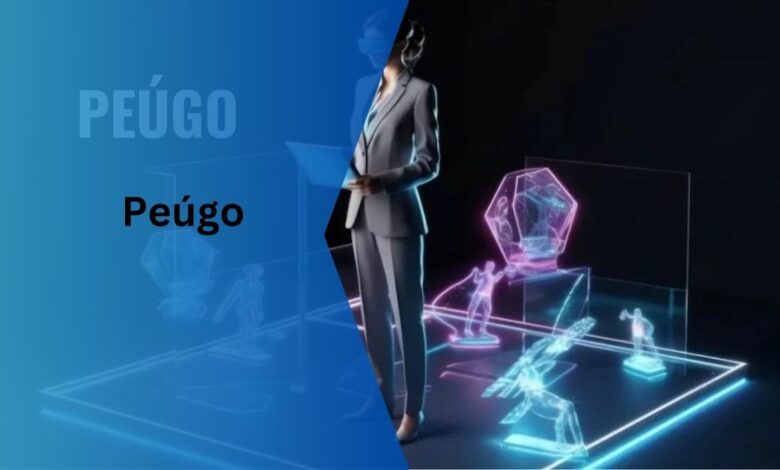Peúgo – Unveiling the Two Faces of a Word

Have you ever come across a word that leaves you completely puzzled? “Peúgo” might be one of those for you. This seemingly simple Portuguese term hides a surprising duality.
Dive in with us to explore the two meanings of “peúgo” and its fascinating journey through time!”
This little Portuguese word has a surprising double life, depending on the context. Let’s delve into the two meanings of “peúgo” and explore its etymological roots.
History of Peúgo
1. Peúgo: The Practical Side (Short Socks)
This meaning likely emerged from everyday speech in Portugal. There’s no pinpoint date for its origin, but it reflects the need for a simple term to describe a specific type of sock.
As short socks became a common clothing item, “peúgo” naturally filled the gap, becoming a widely understood word in modern Portuguese.
2. Peúgo as Three Months Old (Archaic):
This meaning has a more intriguing history. It stems from the combination of two older Portuguese words: “três” (meaning three) and “mês” (meaning month). Over time, through a process called sound shift, the pronunciation of “três meses” transformed into “peúgo.” This likely happened organically in spoken language, with the exact timeframe being unclear.
The use of “peúgo” for age specifically related to crops might have been prevalent in agricultural communities. However, with the rise of standardized timekeeping and more precise vocabulary, this meaning gradually fell out of favor. Today, it’s considered archaic and rarely used in everyday speech.
In essence, the history of “peúgo” showcases the dynamic nature of language. New words emerge to meet practical needs, while older ones sometimes fade away as communication styles evolve.
So, which “peúgo” are you dealing with?
The answer depends on the context. If you’re browsing a Portuguese clothing website and see “peúgo,” you’re likely looking at short socks.
However, if you stumble upon “peúgo” in an old agricultural text, it might be referring to something that’s three months old.
Read: Discover Fandom
A Look at its Unique Features
The word “peúgo” boasts a charm beyond its simple pronunciation. Here’s what makes it stand out:

- Double Duty:
Unlike most words with one clear meaning, “peúgo” effortlessly switches gears between describing a piece of clothing (short socks) and signifying age (three months old) in an agricultural context. This duality is uncommon and adds a layer of intrigue to the word.
- Shifting Sounds:
The archaic meaning of “peúgo” showcases a fascinating linguistic phenomenon called sound shift.
Over time, the pronunciation of “três meses” (three months) morphed into “peúgo.” This sound change highlights the organic evolution of spoken language.
- A Window into the Past:
The archaic meaning of “peúgo” offers a glimpse into how past agricultural communities might have tracked the growth of crops using a specific vocabulary.
It’s a tiny but valuable piece of the language puzzle, helping us understand past practices.
- Modern Relevance:
While the three-month meaning might be fading, “peúgo” for short socks remains a relevant term in modern Portuguese. This showcases the coexistence of old and new meanings within a single word.
Impact on the Automotive Industry
Due to the meaning of “peúgo” being primarily related to short socks and a (mostly) archaic term for age, it’s safe to say it has no direct impact on the automotive industry.

However, the concept of “peúgo” as a bridge between two seemingly unrelated things can be applied in a broader sense to the auto industry. Here’s how:
- Convergence of Technologies:
The automotive industry is witnessing a convergence of technologies that were once separate.
For example, electric vehicles combine electric motors traditionally used in power tools with advanced battery technology from consumer electronics.
This “peúgo-like” fusion is driving innovation and creating entirely new vehicle experiences.
- Hybrid Powertrains:
A major trend is the rise of hybrid powertrains, blending the efficiency of electric motors with the range and power of gasoline engines.
This approach offers drivers a balance between eco-friendliness and practicality, much like “peúgo” socks provide a middle ground between no socks and full-length coverage.
- Comfort and Performance:
Modern car design strives to create a balance between comfort and performance. This can be seen in features like sport-tuned suspensions that offer a comfortable ride yet allow for dynamic handling – a “peúgo” between a plush sedan and a high-performance race car.
- User Experience and Connectivity:
The line between traditional driving and a digital experience is blurring. Cars are becoming increasingly connected, offering features like in-car Wi-Fi and smartphone integration.
This “peúgo” approach aims to enhance user comfort and convenience by merging the familiar act of driving with the digital world.
Read: Unveiling Makima
Prioritizing the Planet:
Peúgo places a high value on environmental responsibility and has enacted a range of programs to lessen its ecological footprint.

This includes the development of electric and hybrid cars, the exploration of renewable energy sources to power their operations, and the implementation of waste reduction strategies throughout their manufacturing processes.
Future Outlook
Peúgo’s future might mirror the word itself: a blend of innovation. Expect advancements in hybrid engines, personalized AI assistants in-car, and eco-friendly materials.
Imagine customizable cabins and seamless smart home integration – all hallmarks of Peúgo’s “peúgo” approach to the future of driving.
FAQS
1. Does “peúgo” have anything to do with the automotive industry?
The word “peúgo” itself doesn’t have a direct meaning in the car industry. However, the concept of “peúgo” as a bridge between two seemingly unrelated things can be applied to the industry’s focus on merging technologies and functionalities.
2. How might the concept of “peúgo” influence the future of cars?
- Hybrid powertrains: Combining electric motors with gasoline engines for better efficiency.
- Connected car experiences: Blending traditional driving with features like in-car Wi-Fi and smartphone integration.
- Sustainable car design: Merging lightweight materials with high performance for eco-friendly cars.
- Personalized car features: Offering customization options to tailor vehicles to individual needs.
3. What’s the future outlook for Peúgo (replace with the appropriate company name)?
Peúgo’s future success might lie in embracing the “peúgo” concept – innovation through the fusion of different ideas. This could lead to advancements in hybrid engines, personalized user experiences, sustainable materials, and extensive car customization.
In Conclusion:
“Peúgo” serves as a reminder that language can be multifaceted. This little word offers a glimpse into practical clothing and a forgotten way of expressing age in Portuguese.
So, the next time you encounter “peúgo,” take a moment to consider the context and discover which side of this word you’re facing.
Read Also:
- yowmae mall – A Glimpse into the Future of Retail & Entertainment
- Myscad – A Guide to MySCAD Features
- Leave Summer Nguyen Duy Tri • acid madness • 2023
- Unraveling the Importance of “intitle:””index of”” the eighth clause 2022″
- Optimize Your Customer Support with “intext:””powered by smartertrack”””
- Maximizecache.shop – Your Destination for Storage Solutions




